Key Concepts and Terminologies in AI
Overview
Artificial intelligence refers to developing computer systems in a way such that they can simulate/mimic human intelligence. We can achieve this through AI concepts such as Machine Learning, Expert Systems, Neural Networks, and Reinforcement Learning. AI can also be categorized into different types based on its level of autonomy, including Assisted Intelligence, Augmented Intelligence, and Autonomous Intelligence. AI systems act as agents that use reasoning and problem-solving techniques like Backward Chaining to accomplish intelligent behaviour. Thus, AI is a powerful tool that can be used for various applications.
What is Artificial Intelligence?
Artificial intelligence refers to developing computer systems in a way such that they can simulate/mimic human intelligence. Data, algorithms, and hardware are the three primary constituents of AI systems. Data is the engine that drives AI systems to learn and make judgements. AI systems employ algorithms to process data and provide predictions based on that data. Hardware describes the physical elements, such as hard drives, memory chips, and computer processors, that make it possible to process and store data.
AI systems can be divided into two categories: general or strong AI and narrow or weak AI. Narrow AI systems can only function inside their intended domain. They are created to carry out specific tasks, such as image recognition, speech recognition, or language translation. General AI systems are designed to learn and reason about various topics. They can mimic the cognitive capabilities of humans.
AI concepts are divided into a number of subfields, each with its own set of techniques and uses. Some of its applications include robotics, computer vision, natural language processing, deep learning, machine learning, and others. Machine learning, for example, is a subset of AI that focuses on designing algorithms that can learn from data without being explicitly programmed. Deep learning is a subfield of machine learning that uses neural networks to learn from data.
Key Concepts and Terminologies in AI
This section will discuss the key AI concepts and terminologies.
Agent
An agent is a entity that can function independently and act on behalf of a user or another program. An agent can perceive its surroundings, make choices depending on its condition and goals, and take action to accomplish those choices. Agents are frequently utilized in AI applications like robotics, games, and natural language processing. Depending on their level of intelligence, actions, and interactions with the environment, there are various types of agents.
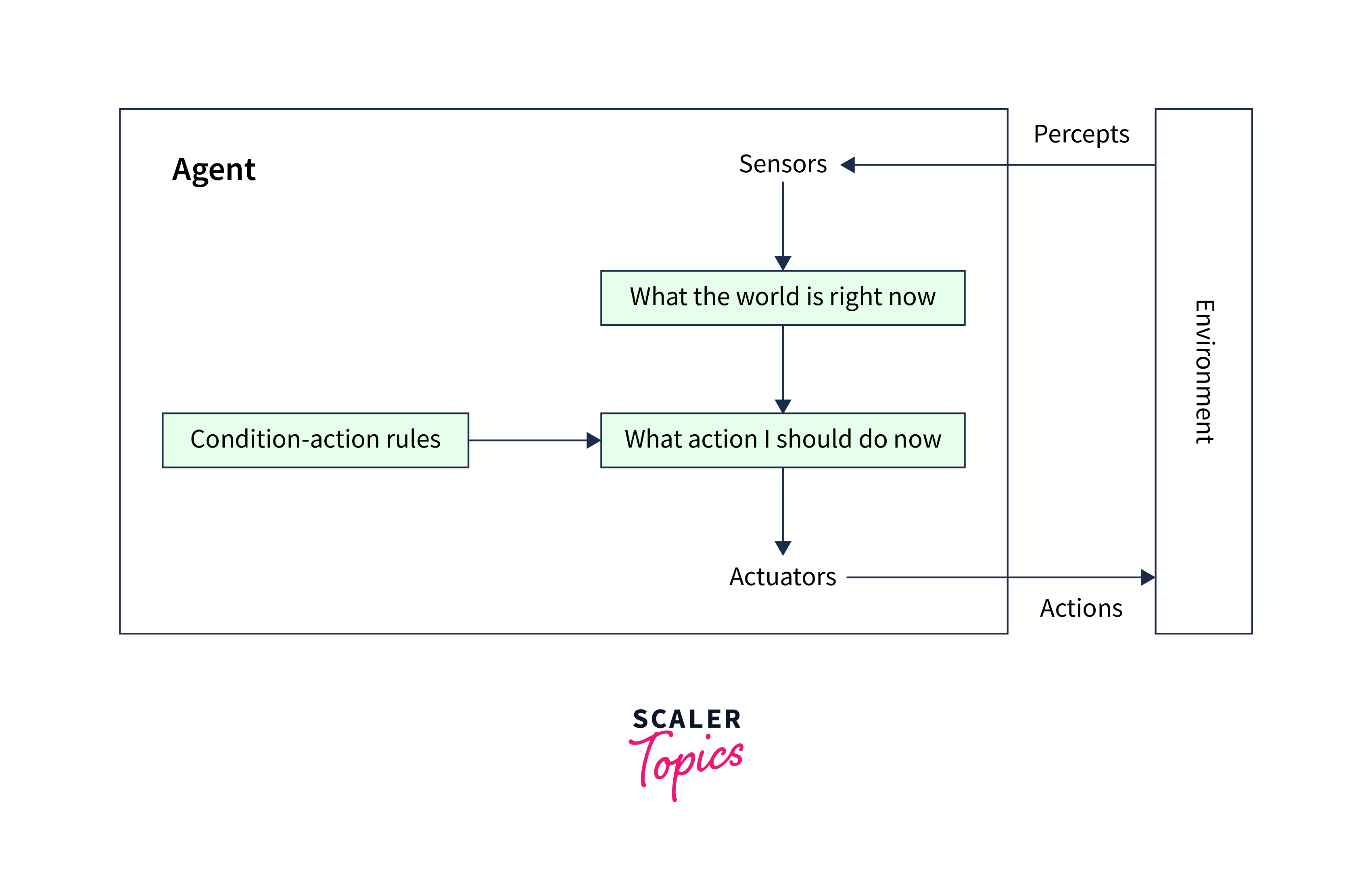
Some of the types of agents are discussed below:
- Simple reflex agents: These agents are memory-less agents, i.e., they make decisions based on the current state of the environment without considering the past or future. They are suitable for simple and reactive tasks that require immediate responses. A typical example of a simple reflex agent is a thermostat that turns the heating on or off based on the current temperature.
- Model-based reflex agents: These agents use an internal environment model to make informative decisions. They can handle more complex situations that require planning and reasoning. An example of a model-based reflex agent is a chess-playing computer program that searches for the best move based on its internal model of the game.
- Goal-based agents: Goal-based agents process the environment's state against the objectives they have set. These agents have been fed with explicit goals. They use a search algorithm to find a sequence of actions to achieve their goals. An example of a goal-based agent is a delivery robot that is programmed to deliver a package to a specific location.
- Utility-based agents: These agents consider the costs and benefits of their actions. They choose activities that have the highest expected utility. They are suitable for decision-making under uncertainty. An example of a utility-based agent is an investment adviser who recommends investments based on the expected return and risk.
- Learning agents: As they gain knowledge from previous experiences, learning agents gradually become more effective. They use machine learning algorithms to find patterns in the data and modify their behaviour accordingly. An example of a learning agent is a spam filter that learns from the user's feedback to classify emails as spam or not spam.
Backward Chaining
Backward chaining is an inference mechanism used in Artificial Intelligence (AI) and automated reasoning. It is a goal-driven strategy in which the system starts with a predetermined aim or conclusion and searches for the facts or data that support it from the back. Backward chaining starts by determining the objective that has to be demonstrated or accomplished. It then looks for guidelines or criteria to help it achieve the end result. A rule or condition is searched for and then tested to see if it holds true. If it is false, the system keeps looking for more laws or conditions that can help it achieve its objective. Until the system locates the information or facts that support the goal, this procedure is repeated.
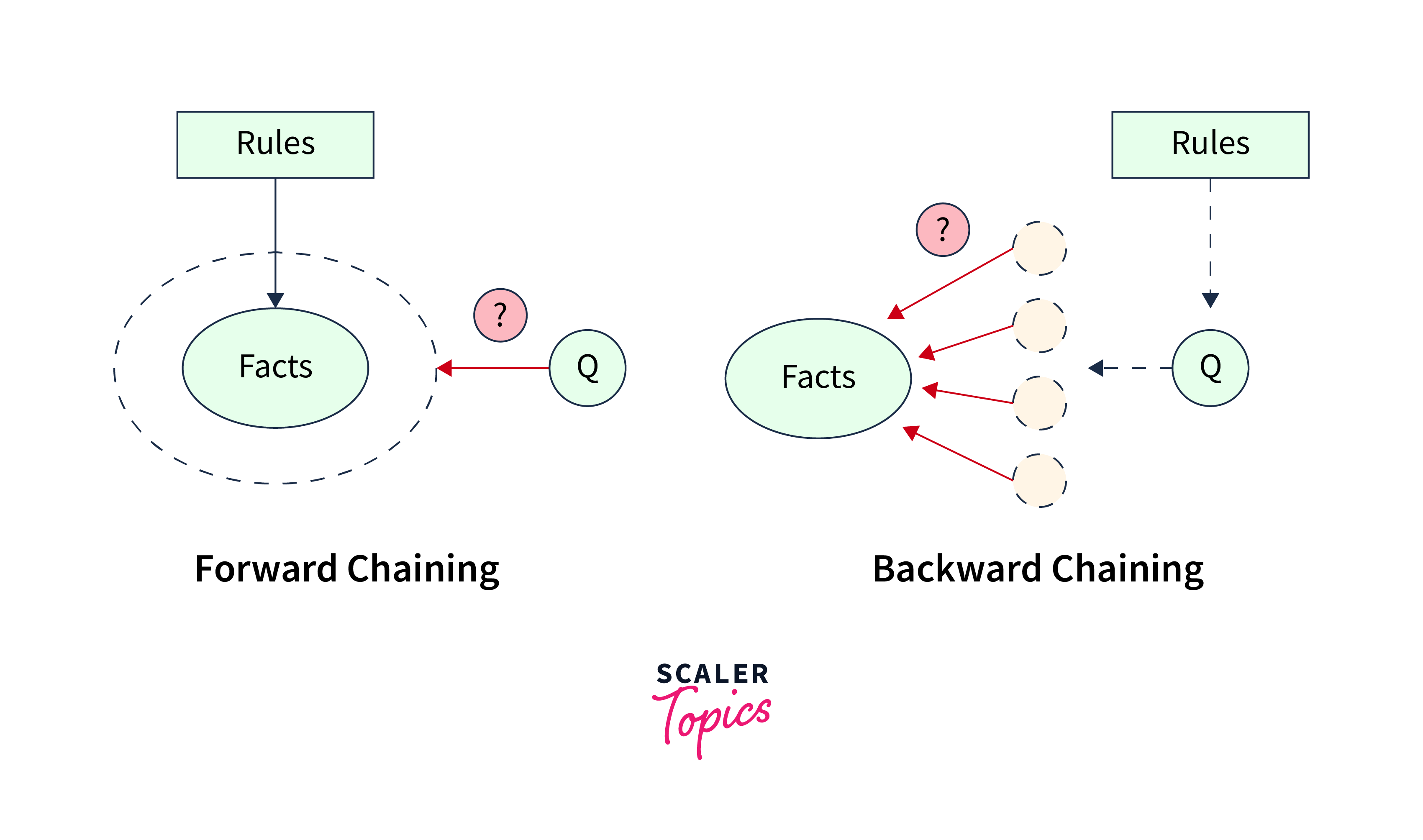
Backward chaining is often used in expert systems, which is an AI concept designed to mimic the decision-making ability of a human expert. In order to solve issues or provide answers to a particular topic, expert systems draw from a knowledge base of laws and facts. Backward chaining is particularly useful in expert systems for diagnostic and troubleshooting tasks, where the system needs to identify the cause of a problem based on the observed symptoms. Backward chaining has several benefits, such as the capacity to handle complex issues and the avoidance of pointless computations. Yet, in some circumstances, it might be slower than forward chaining, another inference process.
Assisted Intelligence
The use of Artificial Intelligence systems (AI concepts) to support human decision-making and problem-solving processes is known as assisted intelligence. As opposed to replacing human intellect, assisted intelligence systems support and guide human intelligence, enabling humans to make better decisions. Machine learning algorithms are used by assisted intelligence systems to evaluate data, spot trends, and uncover insights that may not be visible to humans right away. Based on the data analysis, assisted intelligence systems can also make recommendations and ideas.
Applications for assisted intelligence include corporate intelligence, healthcare, finance, and cybersecurity. For instance, assisted intelligence in healthcare can support physicians and nurses in making more accurate disease diagnoses and creating more efficient treatment plans. By appropriately giving crucial details and insights, assisted intelligence can increase the effectiveness and efficiency of human decision-making. Also, it can help to minimise biases and errors that human decision-makers may introduce. Yet, ensuring that assisted intelligence systems are open and responsible is crucial. They should not compromise human autonomy or completely take the role of human judgement.
Augmented Intelligence
Systems with augmented intelligence are designed to function in conjunction with people, enhancing their intellectual power. These systems examine data, spot trends, and uncover insights that may take time to be evident to people using machine learning algorithms and natural language processing. These insights are subsequently communicated to human users in an approachable and understandable manner. Augmented intelligence aims to improve human decision-making. Both assisted and augmented intelligence are used to describe the use of AI to enhance human decision-making and problem-solving processes. The two ideas do, however, differ slightly from one another. The main distinction between augmented and assisted intelligence is that the former focuses on boosting and supplementing human intelligence, while the latter concentrates on helping human decision-makers.
Autonomous Intelligence
The ability of Artificial Intelligence (AI) systems to function freely, without human involvement or guidance, is referred to as autonomous intelligence. Autonomous intelligence systems are created to make judgements and conduct actions based on their own data analysis and programming. Applications like robotics, self-driving automobiles, and unmanned aerial aircraft frequently use autonomous intelligence. These systems receive information about their surroundings using sensors, cameras, and other data sources. Machine learning algorithms are then used to assess the information and decide how to react. A self-driving car, for example, uses autonomous intelligence to identify obstacles and other moving objects on the road before deciding how to avoid them.
Due to its ability to increase productivity and decrease the demand for human labour, autonomous intelligence has the power to impact a wide range of industrial sectors. The fact that autonomous systems might make choices that have a big influence on human lives raises significant ethical and security issues as well. Hence, it's critical to make sure autonomous intelligence systems are rigorously created and tested, with the necessary safety precautions and ethical standards in place.
Machine Learning
Machine learning is a subset of artificial intelligence (AI concepts) that uses statistical models and algorithms to help computers get better over time at a particular task by gaining experience and learning from data. In conventional programming, programmers create code that tells a computer to carry out particular tasks. In machine learning, a model is trained on a dataset to find patterns and relationships in the data. It allows the algorithm to make predictions instead of directly programming a computer to carry out a task.
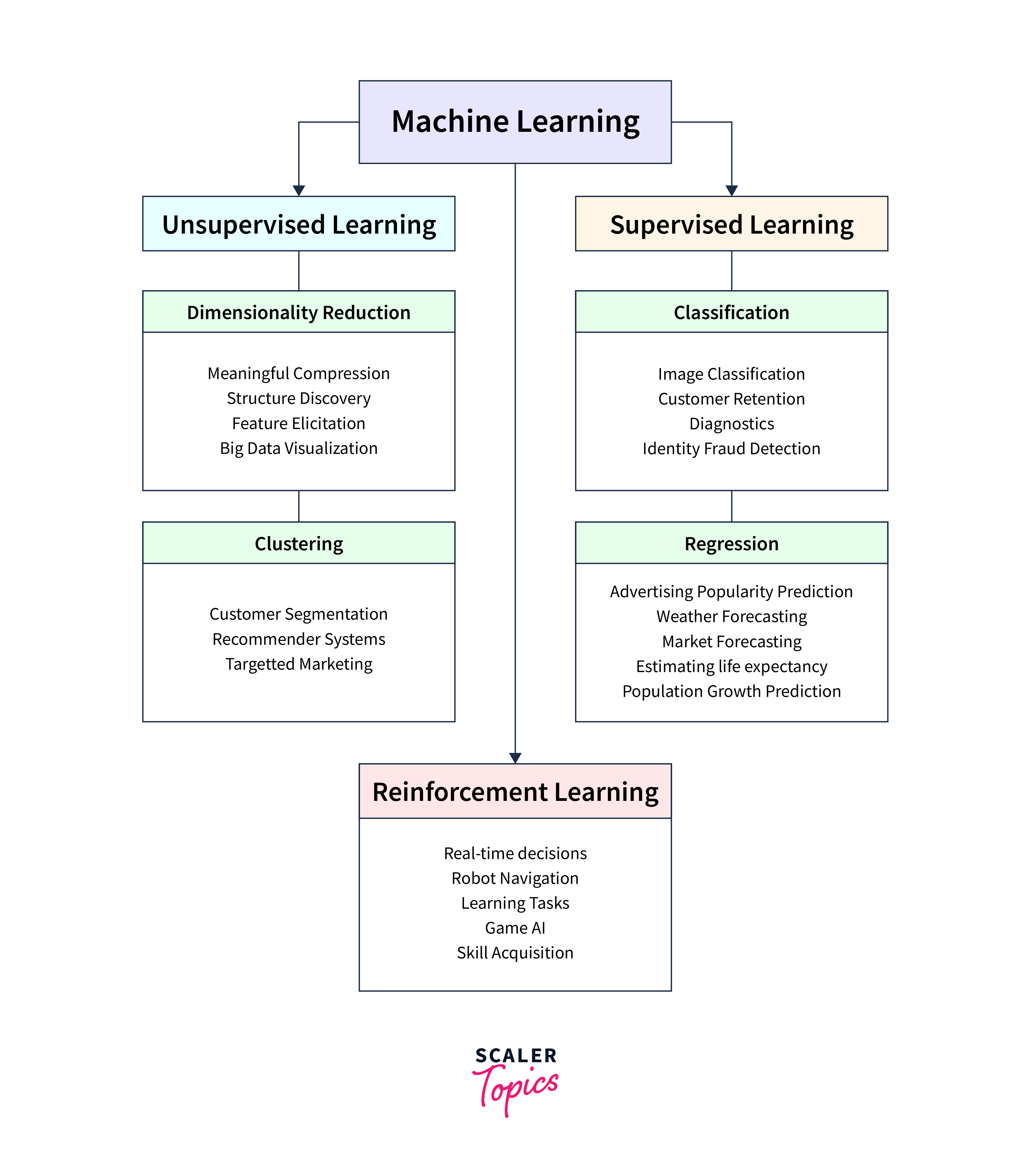
Machine learning algorithms come in various forms, such as supervised, unsupervised, and reinforcement learning. There are several uses for machine learning, including fraud detection, natural language processing, recommendation systems, audio and picture recognition, and predictive analytics. Machine learning has expanded in strength and application across many industries due to the proliferation of large data and improvements in computing capacity.
Expert Systems
Expert systems, sometimes called knowledge-based systems, are computer programs replicating human decision-making capabilities. They are made to incorporate a substantial quantity of specialized knowledge and general rules of thumb within a particular domain to tackle complicated issues. Expert systems have two main components: a knowledge base and an inference engine. The knowledge base is a collection of information and skill in a particular field, like engineering, medicine, or finance. The knowledge base's rules, information, and heuristics are utilized to direct the system's decision-making. The inference engine uses this knowledge base to reason and come to conclusions.
Expert systems are particularly useful when there is a need for more human experts, or expert advice costs are prohibitive. They have various uses, including engineering design, financial analysis, quality control, and medical diagnostics. Expert systems can deliver reliable and consistent results because they are built on a predetermined set of rules and information. They can also lessen the requirement for specific education or experience in a particular field by advising and guiding non-experts. However, expert systems have certain drawbacks, including the necessity for substantial specialist knowledge to create a reliable design and the challenge of maintaining and updating them.
Neural Networks
Neural networks are a subset of machine learning techniques or AI concepts. They are also commonly known as artificial neural networks (ANNs). They comprise interconnected neurons collaborating to process and analyse data, spot patterns, and make predictions. In a neural network, each neuron gets input from one or more other neurons and then generates an output that is transmitted to further neurons. Backpropagation is a technique used in neural network training to modify the strength and weight of connections between neurons to enhance the network's accuracy in data prediction or classification.
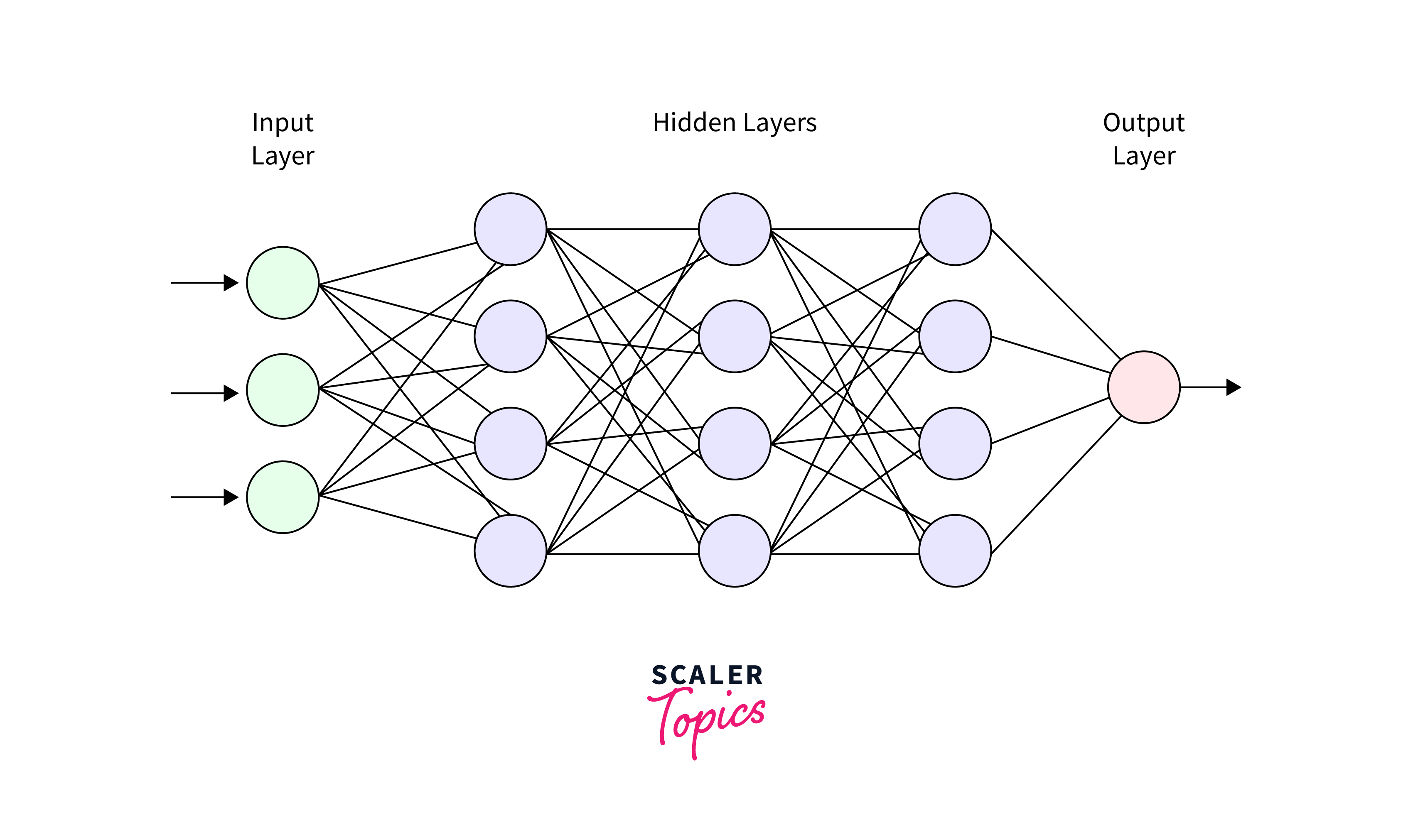
Since neural networks can learn and discover patterns in the data that may be challenging for humans to observe, they are especially well-suited for jobs involving large amounts of complicated data. Neural networks are appropriate for applications that need quick and effective processing because they can also run in real time. Yet, to attain high levels of accuracy, neural networks can be computationally expensive to train. Furthermore, since the underlying decision-making processes are frequently ambiguous and challenging to understand, neural networks can become challenging to interpret.
Deep learning
Deep learning is an AI concept that uses multiple-layered artificial neural networks to process and analyse very vast and complicated datasets. In deep learning, neural networks can learn and extract hierarchical representations of the input data because they are built from multiple layers of interconnected nodes. Deep learning models are beneficial in applications like image and audio recognition, natural language processing, and autonomous cars because they can learn and recognise patterns in the data. Deep learning algorithms are utilised in fraud detection, predictive maintenance, and recommendation systems.
One of the major advantages of deep learning is its ability to discover and extract features from the data removing the need for manual feature engineering. Deep learning models are scalable and flexible. Large amounts of data can also be used to train deep learning models, which enhances their accuracy and robustness. Deep learning models need substantial computational resources to build and run the models. Another challenge associated with DL models is the difficulty in understanding the underlying decision-making mechanisms in the models.
Reinforcement Learning
Reinforcement learning (RL) is an AI concept that enables an agent to learn from experience by interacting with an environment. The agent learns to act in a way that maximises a reward signal it receives from the environment through reinforcement learning. The RL agent engages with the world by acting, getting feedback in the form of rewards or penalties, and then altering its behaviour in response. The agent's objective is to determine a course of action or policy that maximises the cumulative reward over time.
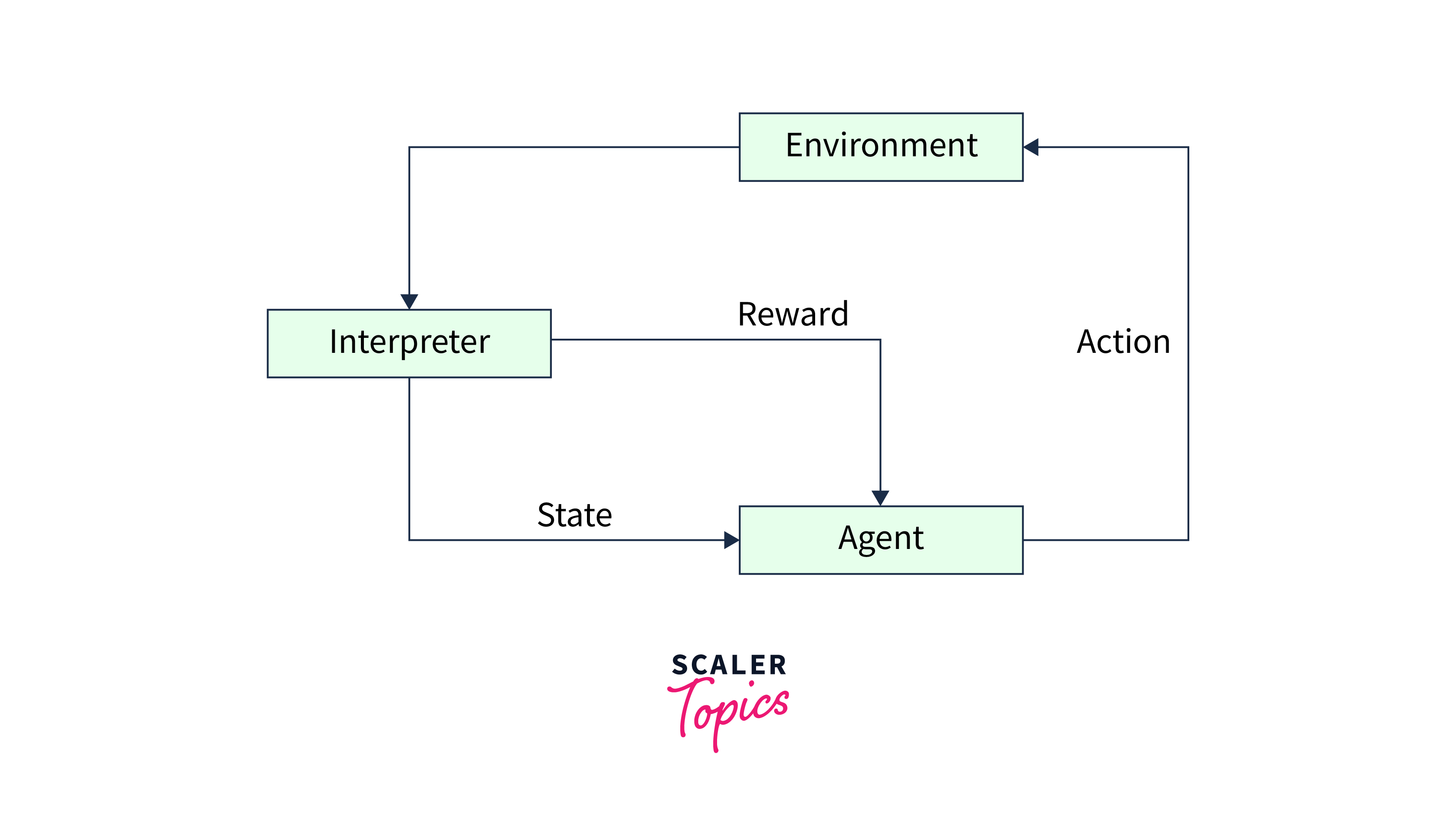
One of its main features is the capability of reinforcement learning to learn from experience and adapt to changing settings without the need for explicit supervision or instruction. Even if doing so necessitates giving up short-term rewards, reinforcement learning agents can learn to optimise long-term rewards. Reward functions that accurately reflect the desired behaviour are difficult to design. Training RL agents requires a lot of data and computational power. There is also a chance that RL agents will take advantage of environmental weaknesses to earn high rewards without actually learning the desired behaviour. For example, an RL agent that is learning to play a game may learn to exploit a glitch or bug in the game to earn high rewards without actually learning the correct way to play the game. In such cases, the agent may fail to generalize its behaviour to new situations, leading to poor performance in real-world scenarios. This phenomenon is known as reward hacking and is a significant challenge in developing reliable RL agents.
Tabular Comparison of the Terms
| Keyword | Description |
|---|---|
| Agent | An autonomous entity that perceives its environment and acts upon it |
| Backward Chaining | An AI concept that starts with a conclusion and works backward to find supporting evidence |
| Assisted intelligence | A type of AI concept that helps humans perform tasks more efficiently and accurately |
| Augmented intelligence | A type of AI concept that enhances human cognitive abilities and decision-making |
| Autonomous intelligence | A type of AI concept that can operate independently without human intervention |
| Machine learning | A type of AI concept that enables machines to learn from data and improve their performance over time |
| Expert systems | AI systems that emulate the decision-making abilities of a human expert in a specific domain |
| Neural networks | A type of AI concept that simulates the functioning of the human brain to recognize patterns and make predictions |
| Deep learning | A type of machine learning that uses artificial neural networks with multiple layers to analyze and process complex data |
| Reinforcement Learning | A type of machine learning where an agent learns from experience by taking actions and receiving rewards or penalties from its environment |
Conclusion
- In conclusion, Artificial Intelligence (AI concepts) contains various techniques that enable computer systems to simulate human intelligence.
- These AI concepts include agents, backward chaining, assisted intelligence, augmented intelligence, autonomous intelligence, machine learning, expert systems, neural networks, deep learning, and reinforcement learning.
- Each of these AI concepts has its own unique advantages and use cases, making AI a versatile field with a wide range of real-world applications.
